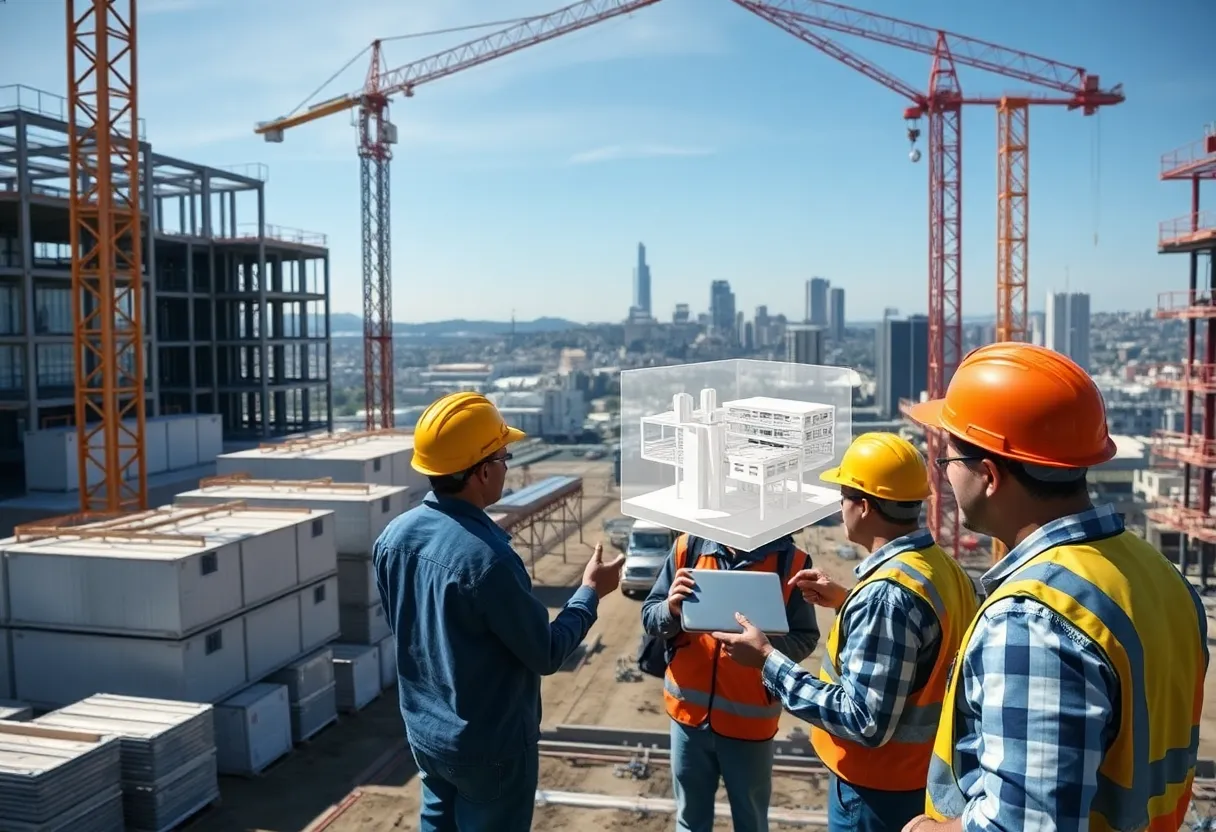Bay Area, August 24, 2025
News Summary
The Bay Area building industry is under pressure from rising wages, new material tariffs, tighter permitting and a shrinking labor pool. Firms are responding by accelerating digital adoption—using BIM, analytics and cloud document platforms—and increasing prefabrication to reduce onsite risk and rework. Large projects face complex approval layers and potential property tax reassessments, so builders are flagging triggers early and building contingencies. Workforce forecasting, CPM scheduling and integrated design-build offerings help manage timelines and client disruption. ADU demand continues amid high regional costs, while firms that combine foresight and disciplined execution can reduce risk and gain advantage.
Bay Area construction faces rising costs, tighter permits and faster tech adoption
What’s new: Building activity across the Bay Area is becoming more expensive and more complicated. Contractors and developers are balancing higher wages, new federal tariffs on key materials, shrinking permit pipelines and faster adoption of digital tools such as Building Information Modeling (BIM). Accessory dwelling unit projects remain in demand even as large-scale multifamily and institutional projects require ever-larger budgets and more layered approvals.
Immediate pressures at the top
Labor costs climbed noticeably in Silicon Valley communities this year, with journeyman rates and entry-level site pay exceeding $19 per hour in some cities. Statewide minimum wages rose again in January 2025, adding to payroll pressure. At the same time, new federal tariffs in the first half of 2025 pushed up prices for timber and steel, forcing firms to update budgets in real time and rethink supply chain plans for every phase of a project.
Economic volatility is shortening breathing room on schedules. A tighter labor market and costlier materials make it harder to stage crews, place large advance orders or build long buffers for delays. Industry leaders warn that passive or delayed responses to these shifts can erode margins and stretch timelines.
Big projects: complexity and communication challenges
Large developments in the region — public infrastructure, multifamily towers and institutional campuses — commonly move with budgets of $50 million or more and multiple funding sources. These projects often require many permits, layers of review and dozens or hundreds of subcontractors over long schedules.
Communication is a central risk on large builds. Project management research finds that breakdowns in dialogue among architects, engineers, trades and permitting authorities can derail timelines and inflate budgets. Best-practice teams assign roles early, set expectations clearly and ensure everyone works from a single model to avoid scope drift.
Digital tools and prefabrication to the rescue
Virtual design and construction platforms such as BIM let teams run full virtual walkthroughs, uncover design conflicts and reduce change orders before work begins. The global BIM market is valued at about $7.92 billion in 2025 and is projected to grow toward $21 billion by 2034, reflecting rapid adoption in large projects. Rework remains costly — industry estimates put rework at as much as 30% of construction costs — so anything that reduces clashes on paper translates to meaningful savings on site.
Cloud-based document systems, construction analytics, and workforce management software are increasingly standard. Analytics track labor efficiency, forecast delays and enable managers to reassign crews across job sites in near real time — for example, shifting frame crews between projects if a drywall schedule slips. Prefabrication of framing, MEP modules and unitized facades is also growing as a way to shorten schedule risk and cut weather-related slowdowns.
Permits, tax reassessments and compliance realities
Permitting in California has trended downward: statewide home permits fell from roughly 97,000 in 2019 to about 90,000 in 2024, and the San Francisco metro permitted about 5,500 homes from January–November 2024 compared with roughly 12,500 in the same period in 2019. Fewer approvals in the pipeline can tighten housing supply and increase competition for qualified builders and workers.
Compliance choices also carry tax implications. In the Bay Area, physical upgrades that extend a building’s life or change its use can trigger property tax reassessment under state law. Typical examples include installing an elevator, converting attic space into livable area, or upgrading electrical capacity beyond baseline systems. Experienced teams identify potential reassessment triggers early and include those risks in client conversations and budgets. Incomplete or late filings for permits and assessments can create unwelcome tax surprises.
Quality control and workforce planning
For multimillion-dollar projects, third-party quality specialists are increasingly used to catch issues before they require costly rework. Top teams build contingencies into budgets and manage quality with ongoing punch lists, not only at project handoff. Workforce forecasting is now as essential as materials procurement: small gaps in the availability of specific trades can cascade into major schedule delays.
Firms use the Critical Path Method (CPM) to identify tasks that control overall timelines and to decide where buffer time or acceleration is feasible. Construction HR platforms automate onboarding and compliance tasks so managers can focus on safety and productivity.
ADU demand and costs
Accessory dwelling units remain a popular path for homeowners seeking rental income, a guest unit, a home office or multigenerational living space. Typical Bay Area ADU construction starts around $500 per square foot. Using a midrange example of $525 per square foot, a 750-square-foot ADU would cost about $393,750. One-bedroom ADUs often command monthly rents in the low-to-mid thousands, though local rules and rent regulations vary across the region.
ADUs can be detached or attached, conversions of garages or interiors, or junior ADUs inside an existing house. Local zoning, setbacks and parking requirements differ by city, and short-term rentals are generally restricted. Builders and owners are advised to verify local ordinances before planning or listing an ADU.
Service expansion in the renovation market
Some design-build firms focused on high-end residential work have broadened their service offerings in the Bay Area to manage everything from kitchen updates to full home remodels. These firms emphasize integrated design and construction services to streamline approvals and keep single-team accountability through project delivery. Many also stress sustainability upgrades and accessibility improvements as growing homeowner priorities.
Outlook
The Bay Area market presents both challenges and openings for innovation. Firms that combine foresight, disciplined execution and digital fluency — planning months ahead, staging work on multiple floors simultaneously and using analytics to make on-the-fly decisions — stand a better chance of protecting margins and schedules as market pressures continue.
FAQ
Q: What is driving higher construction costs in the Bay Area?
A: Rising local wages, state minimum wage increases, new federal tariffs on materials such as timber and steel, and a tighter labor market are primary drivers. Logistical constraints and denser permitting processes add time and cost.
Q: How does BIM help reduce expenses?
A: BIM enables virtual coordination across disciplines, which reduces design conflicts and costly change orders. It also supports accurate quantity takeoffs and digital workflows that speed approvals and cut rework.
Q: When can a renovation trigger property tax reassessment?
A: Significant physical upgrades that extend building life or change use—such as adding an elevator, converting non-habitable space into living area, or increasing electrical capacity—can trigger reassessment under state rules. Early planning and consultation with permitting and tax advisors help manage this risk.
Q: What are current ADU cost and rent benchmarks?
A: ADU construction in the Bay Area often starts near $500 per square foot. A midrange 750-square-foot unit at $525 per square foot would cost roughly $393,750. One-bedroom ADUs frequently rent for around $2,500 per month, though local markets and rules vary.
Q: What steps reduce schedule risk on large projects?
A: Early role assignment, single-model workflows, use of CPM scheduling, workforce forecasting and prefabrication for high-risk components all reduce risk. Ongoing punch lists and third-party quality reviews also limit rework.
Key features at a glance
| Topic | What this means | Practical steps |
|---|---|---|
| Rising labor and materials costs | Higher payrolls and tariffs increase budgets | Update budgets in real time; lock long-lead buys where possible |
| Tightening permit pipeline | Fewer new home permits compared with 2019 | Engage permitting specialists early; plan for longer approvals |
| BIM and digital tools | Reduce rework and coordination errors | Standardize a single model and use cloud document controls |
| Workforce planning | Labor shortages can halt critical sequences | Use workforce software and CPM to forecast and reallocate crews |
| ADU demand | Popular for rental income and flexible living | Check local rules, budget at $500+/sq ft, plan for rent rules |
| Compliance & tax reassessment | Upgrades can change property tax status | Identify triggers early and document permitting decisions |
Deeper Dive: News & Info About This Topic
Additional Resources
- NOA Design & Build expands to elevate Bay Area renovations (Jacksonville.com)
- Wikipedia: Home renovation
- Delivering excellence in the Bay Area — Rami Tawashas (Ritz Herald)
- Google Search: Rami Tawashas construction
- Berkeley’s People’s Park closed for construction (NBC Bay Area)
- Google Scholar: People’s Park Berkeley construction
- Best ADU builders in the Bay Area (SFGate)
- Encyclopedia Britannica: Accessory dwelling unit
- California housing construction & development (San Francisco Chronicle)
- Google News: Bay Area construction rising costs
Author: Construction CA News
The CALIFORNIA STAFF WRITER represents the experienced team at constructioncanews.com, your go-to source for actionable local news and information in California and beyond. Specializing in "news you can use," we cover essential topics like product reviews for personal and business needs, local business directories, politics, real estate trends, neighborhood insights, and state news affecting the area—with deep expertise drawn from years of dedicated reporting and strong community input, including local press releases and business updates. We deliver top reporting on high-value events such as the Rose Parade, Coachella, Comic-Con, and the California State Fair. Our coverage extends to key organizations like the California Building Industry Association and Associated General Contractors of California, plus leading businesses in technology and entertainment that power the local economy such as Apple and Alphabet. As part of the broader network, including constructionnynews.com, constructiontxnews.com, and constructionflnews.com, we provide comprehensive, credible insights into the dynamic landscape across multiple states.




